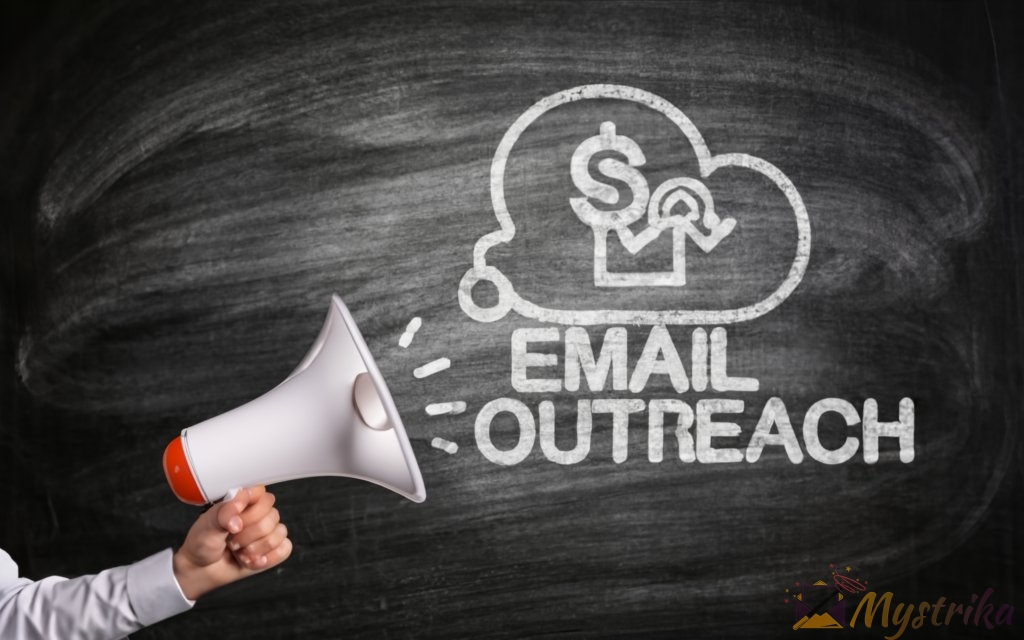Cold email gets a bad rap. But when done right, strategic outreach warms leads, nurtures subscribers, and drives deals. This complete guide explores how unsolicited email works, cold email best practices, deliverability secrets, list building, and designing campaigns that convert. Master the modern approach to email marketing!
What is Unsolicited Email and How Does it Work?
Unsolicited email, better known as “spam”, is one of those unavoidable nuisances of the digital age. Chances are your inbox receives multiple unwanted messages every day touting everything from miracle weight loss pills to Russian brides. But what exactly makes an email “unsolicited”? And how do spammers get your address anyway? In this section, we’ll unpack the definition, types, and pros and cons of unsolicited email so you can understand it better.
Definition of Unsolicited Email
Unsolicited email is any email sent without the recipient’s consent. In other words, it’s email you didn’t specifically ask or opt-in to receive. The CAN-SPAM Act, the law governing commercial email in the United States, defines unsolicited commercial email more formally as:
“Any electronic mail message the primary purpose of which is the commercial advertisement or promotion of a commercial product or service that is transmitted without the consent of the recipient.”
So in a nutshell, unsolicited email is email you didn’t sign up for. It catches you by surprise in your inbox, often from senders you don’t recognize.
Some common examples include:
- Advertisements for products or services
- Marketing emails from brands you’ve never engaged with
- Questionable offers trying to get your personal information
- Offers for “free” ebooks, webinars, or other content in exchange for your email address to build marketing lists.
Legitimate businesses may also send unsolicited email if you’ve made a purchase from them or submitted your email in a non-opt-in way. But most unsolicited email has less scrupulous origins.
Examples of Unsolicited Email
To give you a better idea, here are some classic types of unsolicited email that plague inboxes everywhere:
- Phishing scams: Deceptive emails requesting personal information like passwords or credit card numbers for malicious purposes.
- Weight loss ads: Promising miraculous results from pills, shakes, or supplements.
- Work-from-home offers: Get rich quick schemes involving envelope stuffing, mystery shopping, or similar questionable jobs.
- University diplomas: Bogus offers for fake degree certificates from non-accredited “universities”.
- Enlargement pills/supplements: Offers for male enhancement or breast enlargement products of dubious merit.
- Foreign lotteries: Notifications that you’ve won a contest you never entered (and that probably doesn’t exist).
- Fake invoices: Requests for payment for services you never used from spoofed companies.
- Nigerian prince scams: The infamous scourge of the 1990s seeks your urgent help to transfer millions out of the country.
And those are just a sampling – the variety of unsolicited spam seems endless! Which brings us to…
Main Types of Unsolicited Email
While the specific offers may seem infinite, most unsolicited email fits into a few main categories:
Commercial spam
Legitimate companies selling real products or services via email, but failing to comply with permission and opt-out guidelines.
Scams/fraud
Deceptive emails aiming to trick recipients and steal personal information. This includes phishing scams, fake offers, and more.
Malware distribution
Emails containing dangerous links or file attachments with viruses, spyware, and other malware.
Email harvesting
Messages meant to collect email addresses and grow marketing lists. Compelling headlines drive opt-ins, and email addresses get added to lists.
Nuisance spam
Annoying offers for content like ebooks or whitepapers that deliver little value. Used primarily to build mailing lists.
So in summary, the main varieties of unsolicited email range from illegal scams to legitimate but annoying marketing messages. But how do spammers get your email address in the first place?
How Spammers Get Email Addresses
For unsolicited emails to bombard your inbox, spammers first need your contact information. Here are some of the most common tactics they use:
- Data breaches: Hacking databases from major platforms and services to steal user email addresses.
- Harvesting from websites: Using automated bots and scrapers to gather emails from contact pages and other public-facing web pages.
- Purchased lists: Buying huge databases of emails collected through surveys, contests, and more.
- Malware infected computers: Installing programs to record email contacts from compromised PCs.
- Social media mining: Collecting email addresses visible or connected to social media profiles.
- Dictionary attacks: Guessing email addresses through common username and domain combinations.
- Contact sharing: Apps and services sharing your contacts with partners, often without making it clear.
- Email forwarding: Getting access to forwarded copies of emails originally sent to someone else.
So in summary, if your email address appears anywhere public online, there’s a chance spammers can harvest it. And even without that, large-scale list purchases and breaches make anyone’s email vulnerable.
This raises the question though – is unsolicited email always bad? Let’s weigh some pros and cons.
Pros and Cons of Unsolicited Email
Unsolicited email undoubtedly carries negatives, including:
- Annoying distraction and wasted time
- Security and privacy risks
- Potentiallyhigher costs if you pay for email
- Clogged inboxes and strain on email infrastructure
However, some argue it also offers benefits like:
- Exposing people to new products/services
- Providing marketing exposure for small businesses
- Offering consumers deals and bargains
- Creating email address validation services
- Generating billions in revenue globally
But in most experts’ opinions, the disadvantages still outweigh any potential benefits. And one person’s desired deal is another’s dreaded spam.
The Trouble With Spam
In the end, unsolicited email remains a troublesome byproduct of the information age. The sheer scope including 4+ million spam messages sent globally every minute makes it hard to avoid entirely.
But following validated email lists, being careful where you share your address online, maintaining good security practices, and properly handling opt-ins and permissions can help reduce unwanted messages. And if a few still slip through, robust spam filters help deal with the deluge.
So while we may never fully contain the spam scourge, understanding what it is and how it works makes it easier to manage. And keeping your inbox tidy ultimately comes down to common sense and vigilance.
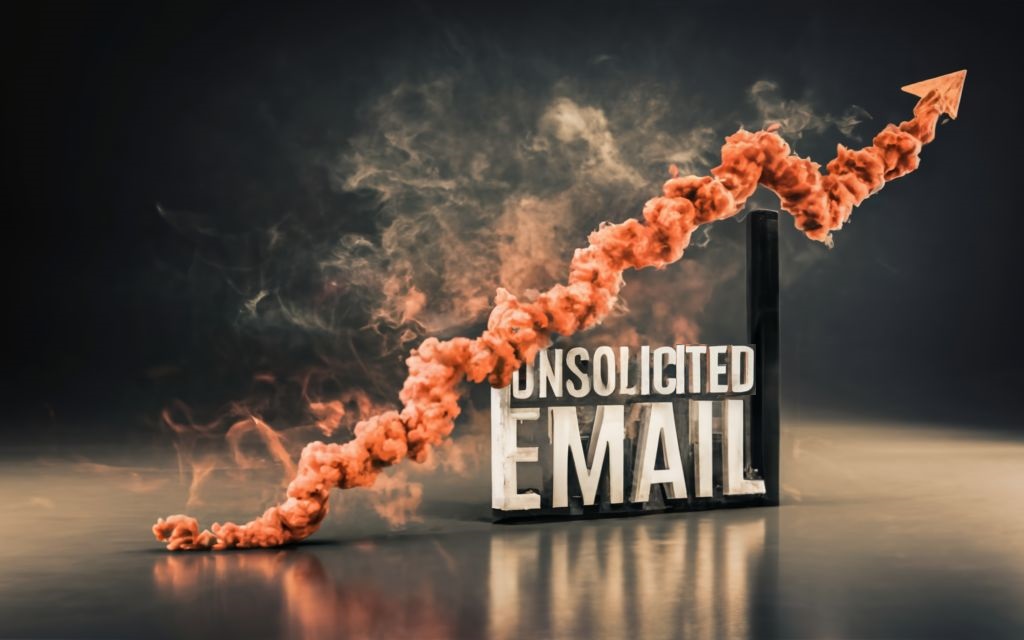
Is Unsolicited Email Legal? Laws and Regulations
With unsolicited emails flooding inboxes nonstop, you may wonder – is spam actually legal? Can someone really send endless promotions and ads without consent? The short answer is it’s complicated. While unsolicited commercial email is restricted in various ways, some forms remain lawful in certain contexts. In this section, we’ll unpack the complex legal landscape around spam.
CAN-SPAM Act
In the United States, the CAN-SPAM Act is the primary law governing commercial email. Passed in 2003, it lays out requirements for commercial messages including:
- No misleading headers: Senders can’t disguise the origin of emails.
- Opt-out option: All messages must have a functioning opt-out mechanism.
- Sender info: Email must contain valid physical address of the sender.
- Subject line clarity: The subject line can’t mislead recipients.
Beyond this, CAN-SPAM doesn’t specifically prohibit sending unsolicited messages. However, it does make it unlawful to:
- Use an open relay or proxy to send spam
- Harvest email addresses using dictionary attacks
- Generate email addresses via brute force
- Access computers without authorization to send spam
- Include false registration information when registering 5+ email accounts
Violating CAN-SPAM can lead to fines up to $43,792 per offence. But perhaps more seriously, it enables recipients to sue spammers.
GDPR and Privacy Regulations
While CAN-SPAM governs commercial messaging, privacy laws like GDPR also impact unsolicited email. The General Data Protection Regulation (GDPR) passed by the EU requires affirmative opt-in consent before contacting consumers electronically.
This makes most unsolicited email illegal within the context of GDPR. Other privacy regulations similarly restrict contacting consumers without prior consent.
Avoiding Spam Filters and Blacklists
Beyond specific laws, senders must avoid practices likely to trigger spam filters or land them on blacklists. These include:
- Sending from suspicious domains
- Using manipulative subject lines
- Including nonsense text to evade filters
- Embedding questionable images
- Sudden spikes in sending volume
Getting blacklisted or labeled as spam can tank deliverability. So spammers use various techniques to avoid filters, including:
- Warming up IP reputations
- Limiting sending rates
- Spoofing legitimate domains
- Hiding promotional content in message bodies
- Using clean domains and hosting providers
But ultimately most robust filters catch on to filter evasion tactics, meaning low inbox placement.
Best Practices for Legal and Ethical Emailing
Given the patchwork of laws and restrictions, what’s the best way to stay compliant? Here are some key legal and ethical email best practices:
- Obtain explicit opt-in consent before sending promotional or transactional emails. Don’t rely on prechecked boxes or inaction as consent.
- Honor opt-out requests immediately. Process unsubscribes within 10 business days max per CAN-SPAM.
- Buy or build your list ethically. Never purchase lists of unknown origin or harvest addresses without permission.
- Provide your valid contact information in compliance with CAN-SPAM and other laws. Don’t hide your identity.
- Send useful, expected content to recipients who want to engage with your brand. Avoid disruptive self-serving spam.
- Target addresses accurately to avoid spamming consumers with no interest. Segmentation and targeting prevents wasted messages.
While no standards guarantee inbox placement 100% of the time, following ethical best practices stacks the odds in your favor. In the end, compliance comes down to respecting consumer preferences and establishing mutual interest – the cornerstones of meaningful communication.
When Is It Considered Spam?
With frequently changing laws and practices, what ultimately gets labeled “spam” depends on several factors:
- The type of content sent – Commercial pitches are riskier than informational outreach.
- Whether the recipient expects to hear from you – No prior relationship means higher spam risk.
- How you collected the address – Purchased or harvested emails often raise red flags.
- Whether you honor opt-out requests – Ignoring unsubscribes guarantees eventual spam classification.
- Your overall sending behavior – Mass blasts with poor targeting can trigger spam filters.
While there’s no perfect formula, focusing on relevance, consent, and thoughtful practices keeps your program both compliant and outside the spam danger zone.
Balancing Permission and Promotion
In the end, the essence of lawful, ethical emailing comes down to respecting recipients’ communication preferences. Seeking their active permission before sending any promotional content is the only surefire way to avoid crossing the hazy spam boundary. And focusing evergreen value over shameless plugs keeps subscribers engaged once you have their attention.
With this balance in mind, it’s fully possible to leverage email legally – and even build enthusiasm in the process.
What is a Cold Email? Definition and Strategy
If unsolicited email brings to mind shady weight loss ads and African prince scams, you may be wondering – what exactly is a cold email? And how does it differ from plain old spam? While subtle, important distinctions separate general unsolicited email from strategic cold outreach. Here, we’ll break down what makes an email “cold”, with examples and tips for writing effective messages.
Cold Email vs Spam – What’s the Difference?
At a high level, both cold email and spam are unsolicited – the recipient didn’t opt into receiving them. But several factors separate effective cold email from the spam heap:
- Targeting: Cold email targets specific individuals, while spam blasts the masses.
- Value: Cold email offers unique value propositions, not generic sales pitches.
- Context: Cold email relates to the recipient’s interests or company.
- Frequency: Cold email sends one-off messages, not endless promotions.
- Transparency: Cold email comes from a real person representing a legitimate company.
So in summary, cold email takes a personalized, value-focused approach while spam is impersonal and self-serving. Let’s look at some examples.
Examples of Effective Cold Emails
Here are two cold email examples that highlight value over salesmanship:
Subject : Making your social media strategy more efficient
Hi {First Name},
I noticed on LinkedIn that you’re Acme Co.’s Social Media Director. We’ve helped companies like yours improve social media workflows – saving 20+ hours per week for teams of your size. If you’re interested in learning more, I’d love to set up a quick call to show you how.
Thanks,
[Sender’s First Name][Sender’s Company]
This email speaks directly to something the recipient likely cares about – their social media efficiency. It demonstrates knowledge of their needs and offers potential value.
Subject: Idea for reducing cart abandonment on your site
Hi {First Name},
I saw you spoke at [Industry Conference] about improving conversion rates on ecommerce sites. I wanted to share a simple technique we’ve found to reduce cart abandonment by 5-15% for some clothing retailers. If you’re interested in hearing the details, I’d be happy to share on a quick call this week.
Best,
[Sender’s First Name][Sender’s Company]
Again, this email indicates familiarity with the prospect’s interests and goals, and shares something that can save them time and money.
Both demonstrate taking the time to understand who you’re emailing and what problems they face. That kind of personal relevance separates cold email from spam form letters.
Crafting Cold Emails That Convert
So how can you write cold emails that get responses like these examples? Here are some key tips:
1. Research them – Identify their role, interests, and company goals. Use that intel to craft relevant messages.
2. Intrigue with the subject line – Get them curious and compel them to open without being misleading.
3. Start personalized – Include their name and company to show you know who they are.
4. Identify a shared goal – Frame your message around something you can do for them.
5. Establish credibility – Provide proof points like relatable companies you’ve worked with in their industry.
6. Directly offer value – Explain how you can help them achieve the goal you identified.
7. Use a clear CTA – Tell them exactly what action to take, like scheduling a call.
8. Make it easy to respond – Close with a simple reply mechanism like hitting “YES” to a meeting invite.
9. Keep it short – Get to the point quickly without large blocks of dense text.
Following a template like this focused on value makes your cold emails stand out from promotional spam.
Tips for Improving Open and Response Rates
Beyond writing effective content, several factors impact cold email results:
- Personalized subject lines boost open rates by 50%+. Avoid one-size-fits all.
- Send one message at a time. Mass blasts are more likely to get spam filtered.
- Use the right sending cadence, like one follow-up 3-5 days after the initial note.
- Verify and clean your lists to remove old, misspelled, and inactive addresses.
- Avoid spam trigger words like “free”, “discount”, “prize”, etc.
- Warm up your IP address by first sending non-commercial messages.
- Send from an appropriate domain like your company, not a generic ESP address.
- Test different days/times and avoid late nights, holidays, and weekends when engagement is lower.
With careful targeting, personalization, and tuning deliverability, open and response rates of 25-50% are achievable for cold email.
Preparing Your Cold Email Sequence
Writing effective one-off cold messages is just the first step. You also need to:
- Develop a compelling subject line sequence to use across first and follow-up emails.
- Create templates with different value propositions tailored to each target persona.
- Build workflows to automatically send follow-up messages to non-responders.
- Set up tracking to monitor open, click, and reply rates for optimization.
With the right tools, cold email allows informative, beneficial communication – not the disruptive spam of old. Follow these best practices, and open doors instead of triggering spam filters.
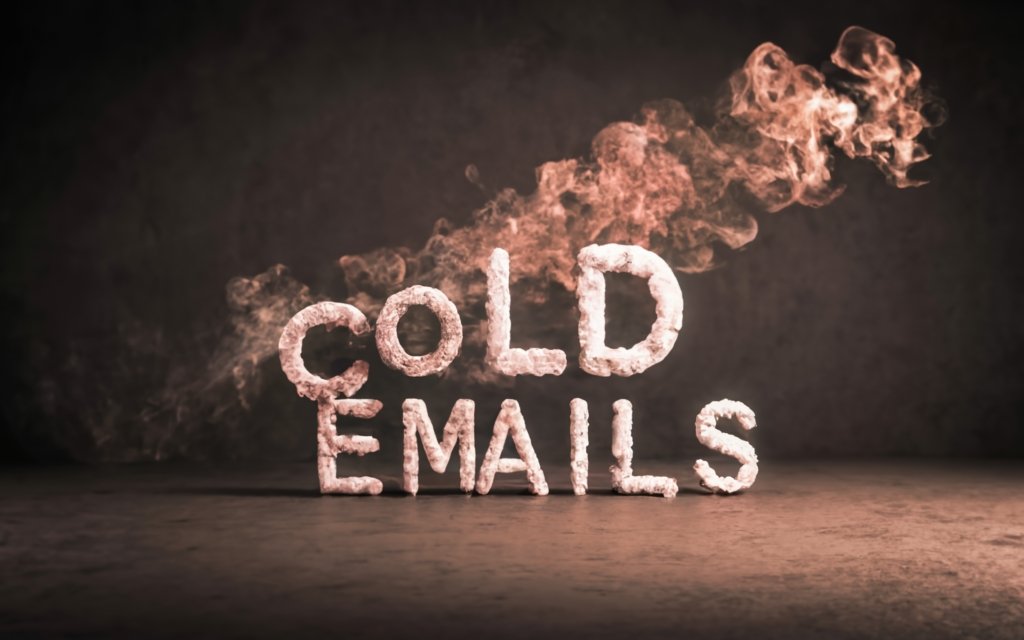
Alternatives to Cold Emailing for Outreach
Cold email can be an effective outreach tactic, but it’s not your only option for connecting with prospects. Depending on your goals and target audience, several alternatives may give you better results and engagement. Here we’ll explore other avenues to consider beyond cold emailing.
Social Selling on LinkedIn
One of the most powerful alternatives today is social selling – leveraging platforms like LinkedIn to build relationships and make sales contact.
The advantages of social selling include:
- Establishing trust through public engagement before direct outreach
- Gaining insight into prospects’ interests by seeing their activity
- Joining relevant groups and discussions to connect with entire companies or industries
- Sharing valuable content that pre-frames you as a subject matter expert
- Enabling two-way conversations instead of one-way messaging
Tools like LinkedIn Sales Navigator make identifying key decision makers and engaging prospects easier. And building organic connections can provide a pipeline before ever sending a cold email.
Networking and Referral Marketing
In-person and virtual events also offer significant contact opportunities:
- Conferences and trade shows – Prime spots to network, connect with fellow attendees, collect business cards, and request introductions.
- Webinars and virtual summits – Provide similar access to many prospects without the logistical headaches of in-person events.
- Referrals and introductions – Getting referred by a mutual connection gives immediate credibility that cold email lacks.
Building such connections allows you to warm up leads before an initial outreach. And referral partners can expand your reach.
Cold Calling vs Cold Emailing
Phone-based cold outreach is another option with some key advantages:
- Higher response rates – Calls generally see 30-60% response rates vs 2-20% for cold emails.
- Real-time interaction – You can engage prospects immediately rather than waiting days on email replies.
- Conveying enthusiasm – Your tone and energy come through clearer on a call.
- No tricky deliverability – Phone numbers don’t go to spam filters or get caught in algorithms.
However, cold calling also has some downsides:
- More resource intensive – Calling requires real staff time versus automated email workflows.
- Flip side of real time – Prospects may not be ready to engage on the spot when you call.
- Perceived salesy – Some prospects see cold calls as pushier than email approaches.
So depending on your goals, availability, and target prospects, cold calling may be the better channel for initial contact.
Warm vs Cold Email Prospecting
Beyond other mediums, you can also look at your general email strategy:
- Warm prospects with content offers and social engagement first before any sales outreach. This indirectly nurtures interest before you ever reach out directly.
- Double opt-in welcome flows when prospects sign up for content. This builds in explicit permission to nurture them as email subscribers over time.
- Lookalike profiling to identify prospects similar to existing customers. Homing in on lookalikes avoids completely cold outreach.
- Multichannel nurturing, like combining email with calls, social media, and ads. This surrounds prospects with your brand instead of just one-off messages.
In summary, various options exist to “warm up” prospects before direct sales outreach. Avoiding purely cold scenarios improves results.
Weighing Cold Outreach Alternatives
Assess your available tactics and resources against factors like:
- Size, profile, and accessibility of your target market
- Typical sales cycle length for your offering
- Resources to nurture prospects over time or call at scale
- Expected response rates for cold email vs other channels
- Whether building relationships or quick conversions are more important
For example, transactional products may lean heavier on cold email for cost efficiency. But complex B2B solutions may benefit more from virtual events and warm nurturing.
Finding the right balance for your goals, market, and capabilities takes testing and optimization. But expanding beyond cold email gives you more leads in the funnel before directly selling.
Diversify Outreach Channels
Relying solely on cold email leaves many prospects untouched. Social selling, events, warm nurturing, lookalike profiling, calling, and other avenues help you take a multi-faceted approach.
Experiment with channel combinations and build data-driven workflows to automate where possible. With the right outreach mix, cold email becomes just one thread in a complete prospecting fabric.
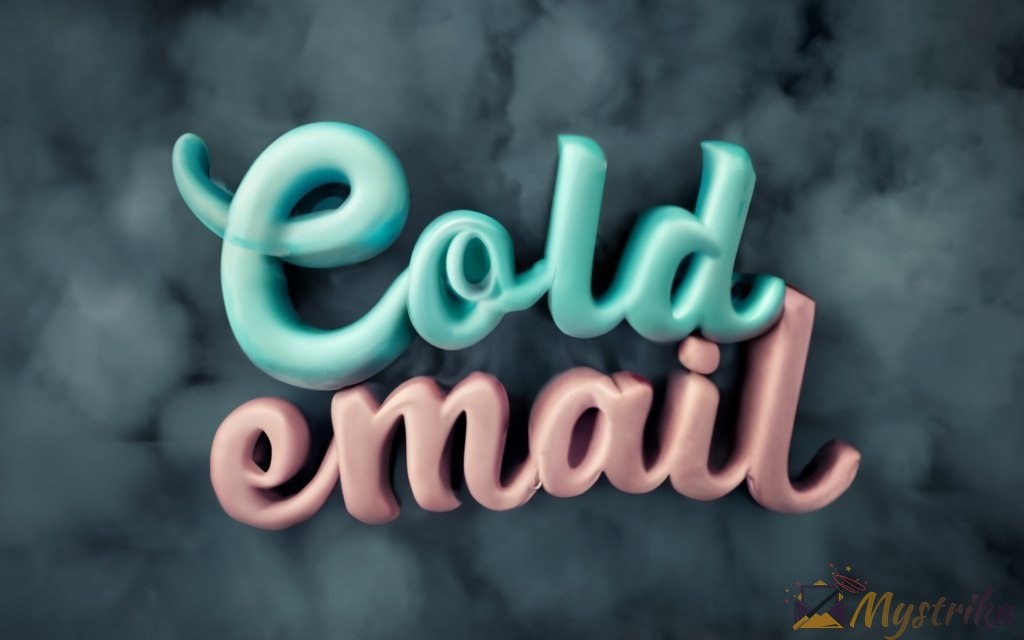
Email Deliverability and Inbox Placement
Even the most compelling cold email is useless if it ends up blocked, banned, or relegated to spam folders. Ensuring your messages reliably land in recipients’ inboxes requires focusing on deliverability. Here we’ll explore strategies and best practices for avoiding filters, authenticating your emails, and improving overall inbox placement.
How to Avoid Spam Filters
Robust spam filters on major email providers like Gmail block billions of unwanted messages daily. Avoiding false positives requires understanding what these filters look for:
- Suspicious content – Spammy keywords, suspicious links, embedded images, attachments, etc.
- Deceptive subject lines – Tricky phrases like “Unbelievable deal inside!”, which spammers overuse.
- Poor targeting – Sending bulk irrelevant messages instead of niche content.
- Invalid and abused senders – Messages from shady addresses, domains, and IP addresses.
- Strange send patterns – Irregular volume spikes, unusual sending times, rapid succession, and similar red flags.
Follow basic best practices to avoid triggers like these:
- Send useful content subscribers genuinely want. Don’t make messages too sales-focused.
- List addresses ethically. Never buy or scrape questionable email lists.
- Target carefully. Segment and only send relevant messages to each subscriber.
- Establish sender credibility. Ensure you’re using a proper domain and address tied to your brand.
- Honor opt-outs. Remove unsubscribed addresses immediately to maintain list hygiene.
- Introduce new senders conservatively. Initially send lower volume non-promotional messages.
- Avoid excessive keywords. Don’t cram messages full of terms commonly abused by spammers.
Email Authentication Methods Explained
Beyond general best practices, you can proactively authenticate your sending infrastructure through methods like SPF, DKIM, and DMARC.
SPF checks that mail appears to come from valid IP addresses authorized to send on behalf of your domain.
DKIM cryptographically signs messages to confirm they have not been tampered with in transit.
DMARC aligns SPF and DKIM to check both IP and content integrity for each message.
Correctly implementing authentication provides deliverability benefits like:
- Passing more stringent sender verification checks
- Reducing spam folder filtering
- Shielding you from impacts if your domain is spoofed
- Allowing recipients to safely add you to contact lists
- Building positive domain reputation
Best Practices for Email Deliverability
Beyond specific tactics, several overarching best practices enable reliable inbox placement:
- Monitor sender reputation with tools like MXToolbox to catch issues proactively.
- Analyze spam filter feedback through bounce messages to identify problems.
- Review authentication records regularly to confirm SPF/DKIM/DMARC is working.
- Check placement manually in advance with test messages from new senders.
- Warm up new senders by first sending only transactional messages.
- Set proper rDNS and DKIM to align physical and digital infrastructure.
- Mind overall sending volume and cadence to avoid looking like a spammer.
Deliverability is an incremental process requiring continuous optimization over time. But getting the basics right ensures your messages get through.
The Role of Subject Lines and Preheaders
Finally, well-crafted subject lines and preheader text encourage opens while avoiding spam filters.
Subject lines should balance curiosity and clarity so recipients know enough to want to open without being misled.
Preheader text gives an extra snippet visible on many mobile apps. This provides additional context.
Some preheader and subject line best practices include:
- Including recipient first name and company to personalize
- Establishing value by identifying a shared goal
- Sparking interest with questions and inclusive language (“we”)
- Conveying a benefit the prospect likely wants
- Structuring subject lines with attention-grabbing beginnings
- Keeping preheaders descriptive but concise at under 50 characters
- A/B testing variations to identify best performers
Optimizing these “envelope” components boosts open rates while avoiding overly spammy or deceptive language.
Continuously Refine Deliverability
Getting into inboxes requires continuously monitoring data and refining sending techniques. Core best practices like authentication, list management, careful targeting, and sender reputation lay the foundation.
From there, small tweaks like improving subject lines, warming new IPs, and analyzing spam filter patterns incrementally improve deliverability. Treat inbox placement as an ongoing optimization process, not a one-time tactic.
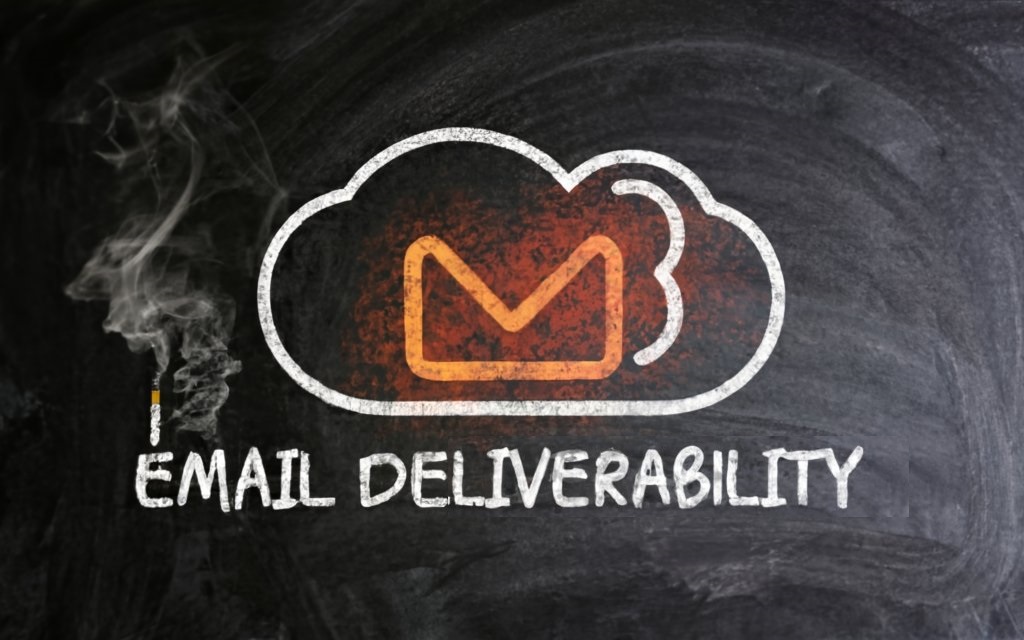
Building an Email List from Scratch
Reaching prospects via email requires first building a subscriber list. Starting from zero users, you need strategies to collect email addresses and cultivate engaged audiences. Here we’ll explore proven techniques to gather leads, build your own lists vs buying them, and manage hygiene as you scale.
Lead Generation and List Building Strategies
Assuming you’re not purchasing generic lists, several tactics help collect emails ethically:
Website lead captures – Offer opt-in content like ebooks, webinars, and guides in exchange for email addresses. Use pop-ups, embedded forms, and landing pages to collect visitor information.
Social follows – Running contests and cross-promoting social channels like Facebook and Twitter builds followings. Capture emails through entry forms.
Retargeting ads – Use display ads to target site visitors after they leave. Ads with lead gen forms gather more email subscribers.
Partnerships and guest posting – Contribute articles and content to complementary sites. Include calls-to-action to join your list.
Referral campaigns – Get existing subscribers to share your opt-in offers via email and social media. This leverages their networks to promote you.
Offline prospecting – Although harder to scale, real-world networking, events, and phone calls allow you to manually collect individual leads.
Combining these diverse tactics ensures you gather emails through multiple inbound and outbound channels.
Purchased Email Lists vs Organic Lead Gathering
Instead of gathering leads manually, you may consider buying email lists and contacts from brokers or list providers. This can help jumpstart volume fast.
However, major downsides to purchased lists exist, including:
- High rates of invalid and unengaged addresses – Lists age rapidly, meaning more bounces and spam complaints.
- No existing relationship or permission – Recipients don’t know who you are or want your messages.
- Lack of targeting and segmentation – Blast messaging drives poor engagement and conversions.
- Much higher spam risk – Purchased lists often attract immediate spam filtering and blacklisting.
While homegrown lists take more effort to build, they have huge advantages:
- Accurate, fresher data from direct opt-ins and engagement.
- Proper consent and expectation to receive messages from you.
- Relevance through segmentation since subscribers joined for specific interests.
- Higher trust and response thanks to existing relationships.
So while buying lists provides instant scale, ultimately organic lead generation wins long term.
Tips for Managing a Growing Email List
Once you begin accumulating addresses, proper management ensures your list remains clean and engaged over time. Key tactics include:
- Confirming double opt-in consent with confirmation emails to document permissions.
- Segmenting subscribers based on demographics, interests, and engagement profiles to send targeted content.
- Tracking opens and clicks to monitor engagement and fine-tune your approach.
- Prompting for resubscription periodically to reconfirm interest and remove inactives.
- Sending reengagement campaigns to bring back dormant subscribers by offering new value.
- Looking for trends and triggers causing unsubscribes to identify content or targeting issues.
Ongoing monitoring, trimming, and optimization keeps your list responsive as it grows.
Email List Hygiene Best Practices
Maintaining list “hygiene” also helps ensure deliverability and inbox placement over time. Here are key practices for keeping lists clean:
- Prune inactive subscribers that haven’t opened in 6+ months. Don’t send to and build engagement history with dead addresses.
- Remove unsubscribes immediately to honor preferences and avoid spam complaints.
- Delete hard bounces after just 1-2 failed delivery attempts to keep faulty addresses from damaging sender reputation.
- Verify addresses entering your list to catch typos and malformed entries before mailing.
- Treat high soft bounce rates (>15%) as a warning sign of potential issues.
- Compare against spam trap lists to identify and remove addresses security researchers use to identify spammers.
Healthy list hygiene takes constant vigilance, but pays dividends in better deliverability and response.
Think Beyond Initial Collection
While acquiring subscriber emails marks the first step, effective list management and hygiene sustains growth over the long haul. Avoid just amassing addresses. Instead, actively cultivate engaged audiences that respond to your messages.
This more holistic perspective ensures your list provides ROI long after the initial names enter your database.
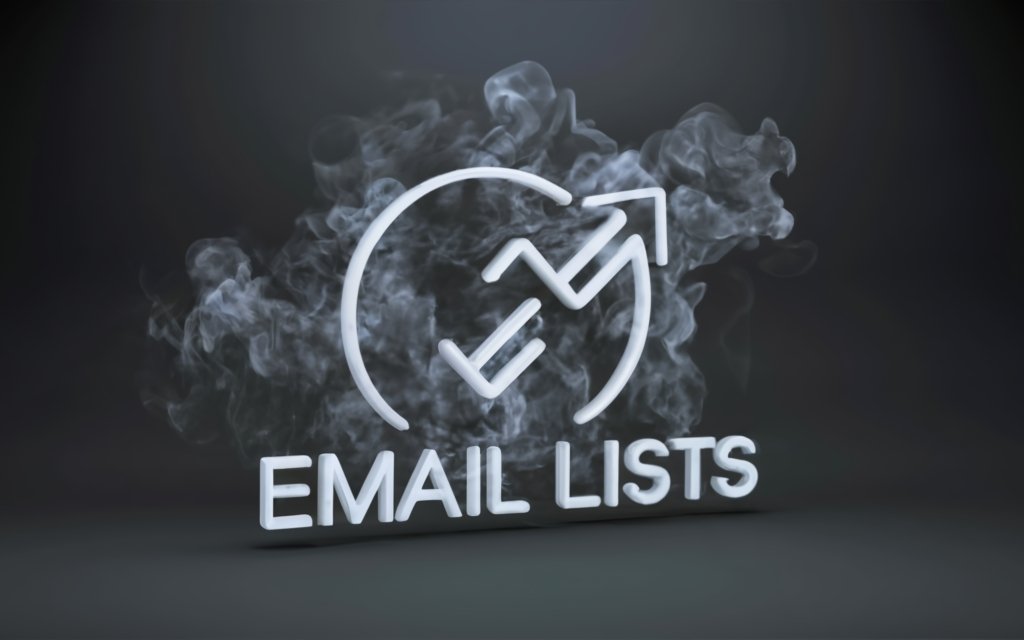
Designing Effective Email Newsletter Campaigns
Once you’ve built your list, the real work begins – crafting compelling campaigns that engage subscribers over time. Thoughtful segmentation, valuable content, and promotions that actually resonate require skill. Here we’ll explore strategies for planning effective email newsletters your audience loves.
Email Segmentation Strategies
Generic blast emailing is sure to flop. Instead, use segmentation to target subscribers with relevant messages:
Demographics – Send content tailored to groups like job titles, seniority, gender, age groups, and more.
Interests – Segment by stated preferences, content downloads, and engagement with specific topics.
Engagement – Treat highly engaged subscribers differently from casual openers and dormant contacts.
Buyer stage – Send specific nurture tracks for prospects in awareness, consideration, and decision stages.
Customer data – Integrate CRM and marketing automation data to personalize based on subscriber activity.
Behavior – Create segments based on actions like visiting key site pages, clicking links in messages, or completing forms.
Getting granular with segmentation ensures no two subscribers get the exact same irrelevant blast email.
Writing Compelling Email Newsletter Content
Once you identify clear segments, provide each one targeted value through your content:
** Solve specific problems** – Offer actionable advice tailored to challenges each subscriber faces based on their profile.
Mix formats – Combine text, images, infographics, video, and audio content to appeal to different preferences.
Share insider tips – Provide exclusive tricks and actionable techniques subscribers won’t find anywhere else.
Curate industry insights – Select and share the most valuable third-party content on focused topics.
Invite contribution – Ask subscribers to submit guest posts, vote on topics, contribute questions for experts, etc.
Highlight exemplars – Feature specific use cases and customer examples relevant to each list segment.
Make it scannable – Break up dense text with subheaders, bullet points, highlights, and other formatting to ease consumption.
Optimize subject lines – Use emotional triggers, urgency, curiosity, and value propositions tailored to each segment.
Promotional Email Best Practices
When weaving promotions into non-spammy newsletters:
Provide exclusive value – Special sales, discounts, upgrades, and perks increase perceived value of offers.
Limit frequency – Keep promotional messages to 20% or less of total volume. Over-selling frustrates subscribers.
Test thoroughly – Optimization tests identify offers, copy, timing, and formats that maximize results.
Personalize strategically – Individualize where possible, but avoid anything that seems invasive or creepy.
Give control – Provide preference centers and one-click unsubscribe options on all messages.
Make compliance clear – Include physical addresses and ensure opt-out works to demonstrate CAN-SPAM compliance.
Funnel strategically – Move subscribers through awareness->interest->consideration->conversion with targeted promotions at each stage.
Avoid tricks – Don’t disguise ads as organic content or manipulate forms to gather unintended consent. Transparency and consent drive results.
Metrics for Evaluating Email Campaign Success
Key indicators to track across segments and campaigns include:
- Open rates – Percentage successfully opened. 25-50%+ is strong depending on list size and segment.
- CTR – Click-through-rates on key content and call-to-action links.
- Conversion rates – Measures newsletter views to desired actions like sales, leads, and sign-ups.
- Churn – Compare new sign-ups to losses from unsubscribes and inactives. Growing lists see more adds than drops.
- Engagement – Use composite scores incorporating opens, CTRs, and survey feedback to identify most engaged segments.
- Bounce and complaint rates – Monitor for deliverability issues pointing to potential problems.
Apply 80/20 rule principles to identify and double down on your best-performing segments and campaigns.
Optimize the Full Buyer Journey
Email marketing excels at nurturing buyers through multi-touch journeys. Map subscriber segments and campaigns to each lifecycle stage for an end-to-end strategy.
With detailed segmentation and value-focused execution, you can build loyal audiences that open, click, convert, and ultimately provide outstanding ROI.
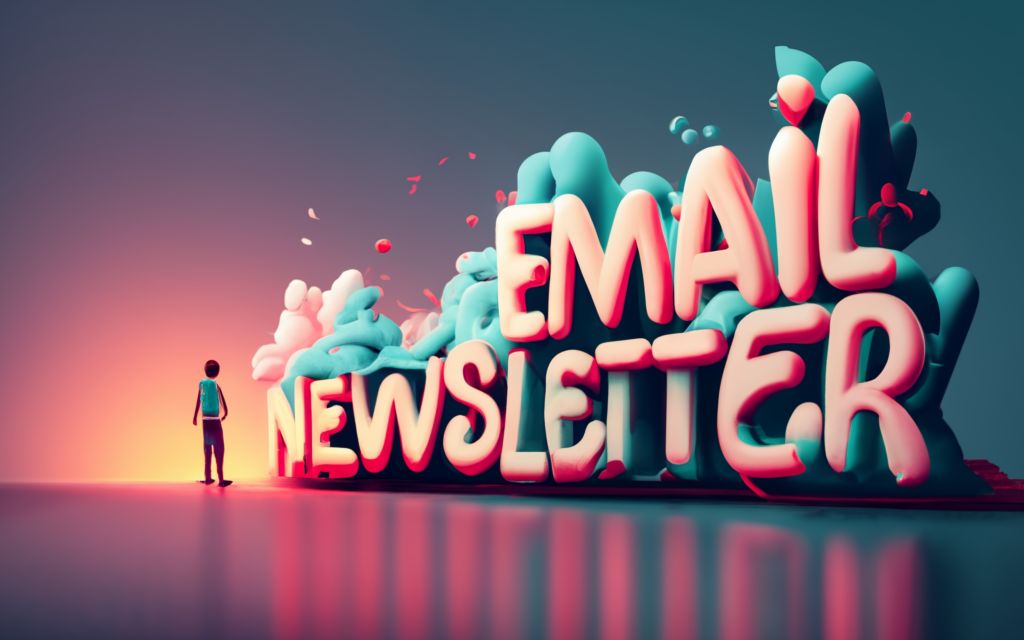
Key Takeaways on Effective and Legal Email Outreach
Email remains one of the most powerful digital marketing channels if used properly. Some core lessons on how to maximize its potential while respecting recipient preferences include:
- Understand the difference between general unsolicited email and strategic cold outreach – Not all unsolicited messages are created equal. Cold email focuses on value while spam blasts sales pitches.
- Comply with anti-spam laws and authentication methods – CAN-SPAM, GDPR, and tools like SPF and DKIM protect consumers while enabling legitimate outreach.
- Personalize cold messages to demonstrate relevance – Research and customization show you respect the recipient’s time.
- Focus on helping over selling – Lead by providing unique value aligned with target needs before promoting products.
- Leverage other outreach channels too – Social selling, events, cold calling, and nurture marketing expand your reach.
- Monitor deliverability signals and optimize – Continuously refine targeting, content, and sender practices to improve inbox placement.
- Build your list organically from engaged followers – Avoid buying lists, and instead cultivate first-party consenting subscribers.
- Write targeted content and segment ruthlessly – Promotional emails fail without compelling messaging tailored to each subscriber’s interests.
- Apply lessons from the best email marketers – Stay up on current tactics and tools through testing and research.
Respecting preferences, providing value, optimizing deliverability, and engaging subscribers lead to email marketing success. Follow these principles, and open new doors to connecting with customers.
Here are some frequently asked questions to cover common inquiries related to the topic:
Frequently Asked Questions
Q: What are some alternatives to cold email outreach?
A: Social media outreach, networking events, referral marketing, cold calling, and lead nurturing campaigns can generate warm leads as alternatives to cold email.
Q: What makes an email address invalid or undeliverable?
A: Invalid addresses may be formatted incorrectly or use fake/misspelled domains. Undeliverable addresses result in hard bounces when the recipient mailbox doesn’t exist.
Q: How often should you send emails to your list?
A: 1-3 times per week is fairly standard for email campaigns. Sending too infrequently loses momentum, but over-sending annoys recipients.
Q: How do you get people to subscribe to your email list?
A: Opt-in offers like discounts, content, and contests drive sign-ups. Partner promotions and website lead captures also help grow your list ethically.
Q: What tools can you use to manage emails and automate campaigns?
A: Email service providers like MailChimp, Constant Contact, ConvertKit, and SendinBlue help manage lists, templates, and complex workflows.
Q: What is a typical open rate for cold email outreach?
A: Open rates around 25-40% are common for cold email. Good subject lines, targeted messaging, and clean lists help maximize opens.
Q: How long should my emails be?
A: For cold email, brevity is key. 3-5 sentences get to the point fast. Newsletters can be longer, aiming for scannable design and varied content.
Q: Can I add public domain images to emails without permission?
A: Yes, public domain images can be used freely in any context, including commercial emails. Just check licenses to verify public domain status.
Q: What is a promotional vs transactional email?
A: Promotional messages market products/services while transactional emails facilitate direct business like receipts, alerts, support, etc.
Let me know if you would like me to add any other common email marketing questions to this FAQ!

